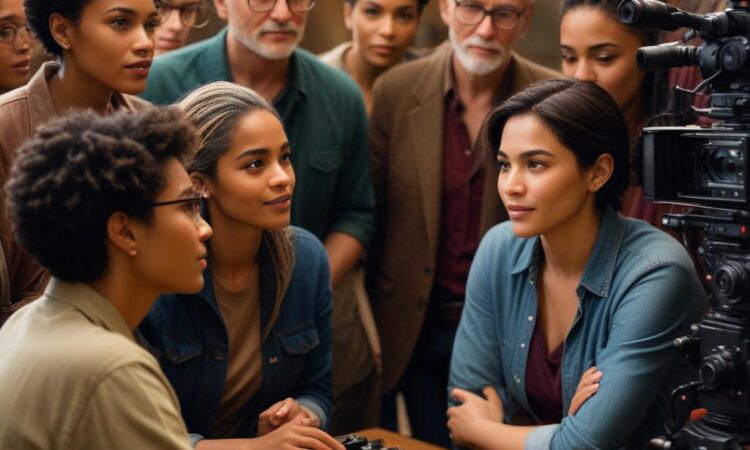The Role of Diversity in Film
Discussions about representation and diversity in film continue, with a focus on highlighting underrepresented voices and promoting inclusivity in the industry. This ongoing conversation encompasses a multitude of perspectives, ranging from the historical lack of diverse storytelling to the contemporary efforts aimed at fostering a more inclusive filmmaking landscape. The argument for diversity in film rests on the fundamental principle of representation. Films have the power to shape perceptions and reflect the complexities of the human experience. However, for decades, the cinematic landscape has been dominated by narratives centered on white, male perspectives, often neglecting the stories and experiences of marginalized communities. This lack of representation perpetuates harmful stereotypes and reinforces societal biases, limiting the range of voices that are heard and understood.The call for diversity in film goes beyond simply casting actors from different backgrounds. It involves the inclusion of diverse voices in all aspects of filmmaking, from screenwriting and directing to production and distribution. This inclusive approach ensures that diverse perspectives are represented both on and off the screen, fostering a more nuanced and authentic portrayal of the world we live in.**The Benefits of Diverse Storytelling**A diverse film industry brings numerous benefits, enriching the cinematic experience for audiences and the filmmaking process itself. * **Authenticity and Representation:** By featuring stories and characters from a variety of backgrounds, films can provide a more accurate and nuanced representation of society. This authenticity resonates with audiences, fostering a sense of connection and understanding across different communities.* **Expanded Perspectives:** Diverse perspectives bring fresh insights and innovative approaches to storytelling. By incorporating a range of cultural experiences, films can explore a broader range of themes, emotions, and narratives, offering a richer and more comprehensive cinematic landscape.* **Increased Creativity and Innovation:** A diverse creative team fosters a more dynamic and innovative filmmaking process. By embracing different perspectives and experiences, filmmakers can develop more compelling and thought-provoking stories.* **Wider Audiences:** Diverse films appeal to a broader audience, attracting viewers from different cultural backgrounds and expanding the reach of cinema. * **Social Impact:** Films can serve as powerful platforms for social change. By showcasing the experiences of marginalized groups and challenging societal norms, diverse films can raise awareness about important issues and inspire positive social change.**Challenges and Opportunities**Despite the growing awareness of the importance of diversity in film, there are significant challenges to overcome. * **Lack of Opportunities:** Underrepresented filmmakers often face barriers to entry in the film industry, including limited access to funding, mentorship, and professional networks.* **Perpetuation of Stereotypes:** The film industry still struggles with the perpetuation of harmful stereotypes and tropes. * **Bias in Casting and Storytelling:** There is a need for greater inclusivity in casting and storytelling, ensuring that characters from marginalized groups are portrayed in a nuanced and authentic manner.* **Representation in Leadership Roles:** Diversity in leadership roles, such as directors, producers, and studio executives, is crucial for creating an inclusive filmmaking environment.**Moving Forward: Fostering a More Inclusive Film Industry**Efforts to promote diversity in film require a multi-faceted approach, involving a commitment from industry leaders, filmmakers, and audiences alike.* **Increased Funding and Support:** Investing in diverse filmmakers and projects is essential for fostering a more inclusive industry. * **Mentorship and Training Programs:** Providing mentorship and training opportunities for underrepresented filmmakers can help them overcome barriers to entry and develop their craft.* **Inclusive Casting Practices:** The industry must adopt more inclusive casting practices, ensuring that diverse actors are considered for a wider range of roles.* **Increased Representation in Leadership:** Promoting diversity in leadership roles within the film industry is crucial for creating a more inclusive environment.* **Audience Engagement:** Audiences play a vital role in supporting diverse films and advocating for a more inclusive industry. **Conclusion**The pursuit of diversity in film is not merely a matter of representation; it is a fundamental step towards creating a more equitable and enriching cinematic experience. By embracing diverse perspectives, challenging harmful stereotypes, and fostering an inclusive filmmaking environment, we can create a cinema that reflects the richness and complexity of our world and resonates with audiences of all backgrounds.

